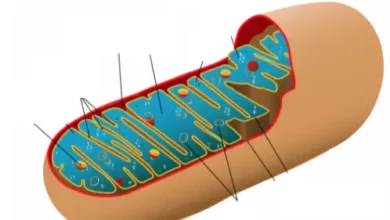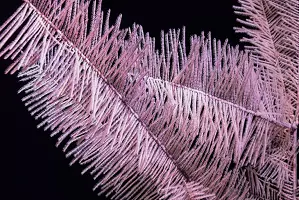Schwann cells can secrete myelin for multiple axons discovered
In vertebrates, oligodendrocytes and Schwann cells are specialized glia cells that generate myelin from the central nervous system and peripheral nervous system sheaths respectively.
In both systems, myelin is responsible for the rapid propagation of the nerve impulse and protects the axon by surrounding it. Furthermore, both the central and peripheral nervous system myelin sheaths are very similar in composition and structure and there is a high degree of overlap in the molecular control of myelination of oligodendrocytes and Schwann cells.
However, there are important differences in how oligodendrocytes and Schwann cells interact with axons. One of the great differences between them is the rate of myelination of both.
[box type = »info» align = »» class = »» width = »»] Both Schwann cells and oligodendrocytes appeared at the same point in evolutionary history: with the appearance of the jaws in vertebrates.
Invertebrates lack myelin, and some, like today’s cuttlefish, use thick axons to rapidly transmit signals between neurons. If we had evolved in this way, our spine could have the diameter of a giant sequoia. [/ Box]
Myelination
In peripheral nerves, Schwann cells select specific axons in a process called radial sorting. This process is thought to work by exploratory processes in a bundle of unmyelinated axons and select only one, with a measurement greater than one micrometer in diameter, to myelinate it.
Upon completion of radial sorting, promyelinating Schwann cells associate 1: 1 with large-bore axons (> 1 μm in diameter), initiating the formation of a myelin sheath.
In contrast, multiple small-bore axons in peripheral nerves are enveloped in non-myelinating Schwann Remak cells. The mechanisms that control the fate of non-myelinating versus myelinating are unclear.
In the CNS, oligodendrocytes also extend exploratory processes that dynamically interact with potential target axons, but unlike Schwann cells, oligodendrocytes can myelinate many axon segments .
Given the broad molecular similarities between Schwann cells and myelinating oligodendrocytes, it is not clear why both exhibit such differences in myelinating ability. In this new discovery, it has been discovered that Schwann cells may have a higher myelinating capacity than previously thought. .
A new potential for Schwann cells
In this new study published in Nature Communications, it is reported that this may be different in certain circumstances, which represents a very important change in what was known until now and what usually comes in textbooks.
Trying to answer the question, why is the myelination potential of the glia so different? found that the loss of a component of E3 ligase, Fbxw7 , greatly enhanced the myelination capacity of Schwann cells.
Mutant Schwann cells in the Fbxw7 component thicken the myelin sheaths and appear to sometimes myelinate multiple axons, condoning oligodendrocyte function.
Several mutant Fbxw7 phenotypes are due to mTOR dysregulation; however, the remarkable ability of mutant Schwann cells to cover multiple axons is independent of mTOR signaling.
[box type = »info» align = »» class = »» width = »»] The target of rapamycin in mammalian cells or mTOR for its acronym in English (mammalian Target of Rapamycin), is a protein present in the cells of mammalian animals that have important functions. The TOR family of proteins is involved in controlling the initiation of mRNA transcription, the organization of the actin cell cytoskeleton, membrane trafficking, ribosome formation, and the regulation of cell growth, proliferation, and death. [/ Box]
This indicates distinct roles for Fbxw7 in the biology of these cells, including the modes of axon interaction that were believed to fundamentally distinguish myelinating Schwann cells from oligodendrocytes
The data reveal an unexpected plasticity in the myelinating potential of Schwann cells, which may have important implications for understanding both peripheral and central nervous system myelination and myelin repair .
This line of research may be useful for future therapies in neurodegenerative diseases such as multiple sclerosis or Charcot-Marie-Tooth disease.




